 W
WThe America Street School was an historic school at 22 America Street in Providence, Rhode Island. The school was a two-story brick structure, built in 1905 to a design by Frederick E. Field. It housed ten classrooms, and was one of four similarly-sized schools built by the city between 1887 and 1916. The building served the city as a school until 1955, and was used for a time thereafter as a meeting place for a local branch of the Veterans of Foreign Wars.
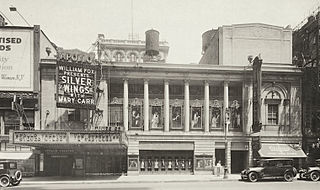 W
WThe Apollo Theatre was a Broadway theatre whose entrance was located at 223 West 42nd Street in Manhattan, New York City, while the theatre proper was on 43rd Street. It was demolished in 1996 and provided part of the site for the new Ford Center, now known as the Lyric Theatre.
 W
WThe Henry Ford Bridge, also known as the Badger Avenue Bridge, is a bridge located in Los Angeles County, Southern California. It carries the Pacific Harbor Line railroad across the Cerritos Channel to Terminal Island from San Pedro, to serve the Port of Los Angeles and Port of Long Beach. It was built to accommodate operations at the Ford Long Beach Assembly plant which opened in 1930 and was closed in 1959.
 W
WThe Brook General Hospital was the westernmost of three hospitals simultaneously situated on Shooter's Hill in southeast London in the Royal Borough of Greenwich. It closed in 1996, and most of its buildings were subsequently demolished.
 W
WBunbury Bridge was a single-track, timber railway bridge in East Perth in Western Australia. The bridge crossed the Swan River near Claise Brook and was built for passenger and freight traffic to Bunbury on the South Western Railway, and was also part of the Armadale railway line.
 W
WThe Chee Kung Tong Society Hall was a former Chinese society hall located on 2151 Vineyard Street in Wailuku, Maui. Built to provide services to single immigrant Chinese males, mostly working for the sugarcane plantations, it provided religious and political help, in addition to mutual aid. Converted to a dormitory in the 1920s, it suffered neglect until finally collapsing in 1996. The site now contains remnants of the foundation, assorted cement structures, and a distinct lintel gate and wall facing the street. The site was placed on the Hawaii State Register of Historic Places and the National Register of Historic Places, but delisted from the State register after its collapse; it is still listed in the NRHP database.
 W
WThe Dike-Orne House was a historic house in Winchester, Massachusetts. A typical rambling New England farmstead, this c. 1850 house was one of the few mid-19th century farmhouses to survive into the late 20th century. The house was added to the National Register of Historic Places in 1989. It was demolished in 1996.
 W
WDutch Reformed Church of Gansevoort is a historic Dutch Reformed church at 10 Catherine Street in Gansevoort, Saratoga County, New York. It was built about 1840 and is a two-story, rectangular brick building on a cut-stone foundation in a vernacular Greek Revival style. It is topped by a moderately pitched, slate-covered gable roof. It features a wooden belfry with louvered openings topped with a pedimented gable roof. The church closed in the 1950s.
 W
WElland Power Station was a coal-fired power station situated adjacent to the Manchester to Wakefield railway line and on a loop of the River Calder, north east of the town of Elland in West Yorkshire. The station occupied a site of some 65 acres.
 W
WThe Grand Riviera Theater was a movie palace theater located at 9222 Grand River Avenue in western Detroit, Michigan. It took its name from Grand River Avenue. It was designated a Michigan State Historic Site in 1980, and listed on the National Register of Historic Places in 1982, but was subsequently demolished in June, 1996. The building was removed from the National Register in 2020.
 W
WThe Hacienda was a hotel and casino on the Las Vegas Strip in Paradise, Nevada, that operated from 1956 to 1996. It was opened by Warren Bayley, who owned other Hacienda properties in California as well. Bayley opened the hotel portion in June 1956, although the opening of the casino was delayed as the Nevada Gaming Control Board objected to his choice of casino manager, Jake Kozloff. The casino portion eventually opened on October 17, 1956. The $6 million property had 266 rooms and the largest pool on the Las Vegas Strip. Like its sister properties in California, the resort included a neon sign that depicted a cowboy riding a palomino horse.
 W
WThe Henry Ford Bridge, also known as the Badger Avenue Bridge, is a bridge located in Los Angeles County, Southern California. It carries the Pacific Harbor Line railroad across the Cerritos Channel to Terminal Island from San Pedro, to serve the Port of Los Angeles and Port of Long Beach. It was built to accommodate operations at the Ford Long Beach Assembly plant which opened in 1930 and was closed in 1959.
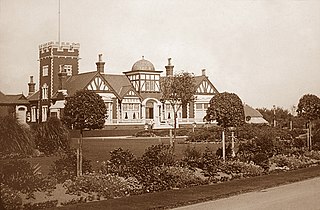 W
WThe Illawalla was an historic Edwardian single-story building in the Skippool area of Thornton, Lancashire, England. Built in 1902, it was demolished in 1996, after lying derelict for six years, to make way for three exclusive homes. Its name is preserved in the name of the road on which these houses now stand and also in the name of the adjacent cricket club, whose grounds partly occupy the land The Illawalla stood on.
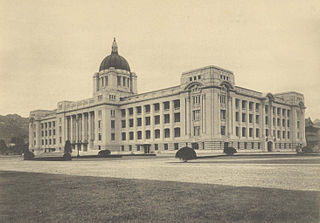 W
WThe Japanese General Government Building, also known as the Government-General Building and the Seoul Capitol, was a building located in Jongno District of Seoul, South Korea, from 1926 to 1996.
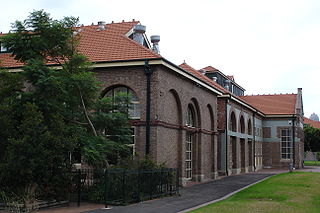 W
WThe Lever Brothers Factory in the Sydney, Australia suburb of Balmain was a soap factory which operated from 1895 until 1988. It employed many people from the local area and its large industrial buildings were a prominent feature of the landscape. Most of the site was demolished in 1996 to make way for a new apartment complex and only three of the original buildings remain.
 W
WMarshall Hall, otherwise known as Marshall Laboratory, was the first microbiology laboratory at the University of Massachusetts Amherst. Constructed in 1916, it housed the college's microbiology department for a number of years, and was used extensively for bacteriology classes and research. The building was named for Dr. Charles Edward Marshall, the first professor of microbiology at the college, a director of the graduate school, and editor of a textbook on the subject, considered "a standard text for many years." As the microbiology department grew with the university, it soon became necessary for additional research laboratory space. In 1947 the Marshall Hall Annex was placed adjacent to the building; the annex was a former army barrack from Westover Army Airfield in Chicopee, and would continue to be used as a classroom space long after the demolition of its brick cohort. With the expansion and removal of the microbiology department to the Morrill Science Center, and years of substandard maintenance, the original Marshall Hall building was demolished in 1996. The new Integrated Science and Laboratory Science buildings now stand at the site of former microbiology laboratory.
 W
WThe Ministry for Foreign Affairs of the German Democratic Republic was a government body of the German Democratic Republic that existed from 1949 to 1990. It had its seat at Schinkelplatz in Berlin-Mitte. A new foreign ministry building was constructed from 1964-1967, but the building was demolished in 1996 after German reunification.
 W
WMount Pleasant Armory was a historic National Guard armory located at Mount Pleasant, Westmoreland County, Pennsylvania. It was designed by W.G. Wilkins Co.. It was built in 1906, and was a two-story, "T"-shaped brick building executed in the Romanesque style. It had a flat roof over the administrative section and a gambrel roof over the drill hall.
 W
WThe Old Canadian National rail yard in Edmonton was once the centre of economic activity in that city. Its redevelopment has fundamentally altered the appearance of the city. The former yard occupied a long, narrow strip from 103 Avenue to 105 Avenue north to south and from 101 Street to 116 Street east and west.
 W
WThe William A. Paterson Factory Complex was a factory located at 126 East 3rd Street in Flint, Michigan. It was listed on the National Register of Historic Places in 1984. The building was demolished in 1996.
 W
WPoillon-Seguine-Britton House was a historic home located in Great Kills, Staten Island, New York, near Great Kills Harbor. The original section was built about 1695 for the French immigrant Jacques Poillon, with a 2-story addition completed about 1845 after the home was sold to Joseph Seguine, and a final major expansion in 1930 for Richard Britton. It was a substantial, 2+1⁄2-story, stone-and-wood structure in the local vernacular style. The interior had some notable Greek Revival style details.
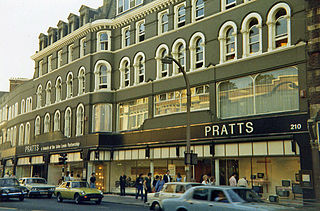 W
WPratts was a department store located in Streatham High Road, London. Established in the 1850s it became part of the John Lewis chain before its closure in 1990.
 W
WThe Presidential Palace in Grozny was a building in the center of the Chechen capital Grozny. The building became a symbol of resistance for the supporters of the Chechen Republic of Ichkeria during the early stages of the conflict in Chechnya. The building was ruined by repeated artillery and air strikes. The Russians demolished it completely in 1996.
 W
WRAF Stenigot is a former Second World War radar station situated at Stenigot, near Donington on Bain, Lincolnshire.
 W
WThe Ravenscraig steelworks, operated by Colvilles and from 1967 by British Steel Corporation, consisted of an integrated iron and steel works and a hot strip steel mill. They were located in Motherwell, North Lanarkshire, Scotland.
 W
WThe Sam H. Harris Theatre was a Broadway theatre within the Candler Building, at 226 West 42nd Street, in the Theater District of Manhattan in New York City. It was built in 1914 and stopped producing plays in 1933. It remained in operation as a movie house for decades and was demolished in 1996.
 W
WThe Sands Hotel and Casino was a historic American hotel and casino on the Las Vegas Strip in Nevada, United States, that operated from 1952 to 1996. Designed by the architect Wayne McAllister, with a prominent 56-foot (17 m) high sign, the Sands was the seventh resort to open on the Strip. During its heyday, it hosted many famous entertainers of the day, most notably the Rat Pack and Jerry Lewis.
 W
WThe Santa Fe Apartments were an apartment building located in Detroit, Michigan. The building was listed on the National Register of Historic Places in 1986 and subsequently demolished by Wayne State University; the site is now the location of the Yousif B. Ghafari Hall.
 W
WSiemensstadt-Fürstenbrunn station was a suburban station on the Berlin–Hamburg railway in Westend, a locality of the Charlottenburg-Wilmersdorf borough in Berlin. It was primarily built for workers at its nearby Siemens Works in the neighbouring quarter of Siemensstadt.
 W
WThe Stella power stations were a pair of now-demolished coal-fired power stations in the North East of England that were a landmark in the Tyne valley for over 40 years. The stations stood on either side of a bend of the River Tyne: Stella South power station, the larger, near Blaydon in Gateshead, and Stella North power station near Lemington in Newcastle. Their name originated from the nearby Stella Hall, a manor house close to Stella South that by the time of their construction had been demolished and replaced by a housing estate. They operated from shortly after the nationalisation of the British electrical supply industry until two years after the Electricity Act of 1989, when the industry passed into the private sector.
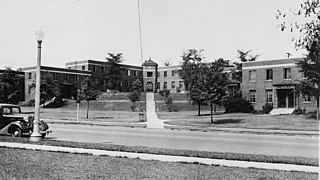 W
WTechwood Homes was an early public housing project in the United States, opened just before the First Houses. Located in Atlanta, Georgia, it replaced an integrated settlement of low-income people known as Tanyard Bottom or Tech Flats. It was completed on August 15, 1936, but was dedicated on November 29 of the previous year by U.S. President Franklin D. Roosevelt. The new whites-only apartments included bathtubs and electric ranges in each unit, 189 of which had garages. Central laundry facilities, a kindergarten and a library were also provided. Techwood Homes was demolished in advance of the 1996 Olympics and is now Centennial Place Apartments.
 W
WThe Windermere House is a historic hotel and resort located in Windermere, Ontario in the Muskoka region. The name Windermere comes from the name of a village and lake in Northern England, locals know Windermere as The Lady of the Lakes. It was built in 1870 in Victorian style, originally as a boarding house, and overlooks Lake Rosseau. It was built by Thomas Aitken as his home on the land he bought in 1863 after moving from Scotland. When the house was becoming full with guests, Thomas Aitken built a new home nearby which would later become the Windermere Cottage. Windermere House remained in family hands after his death in 1919 until 1981 when it was acquired by an investment group. The land was originally intended for Aitken to use for farming but when the land did not prove prosperous, he built his house by the lake.